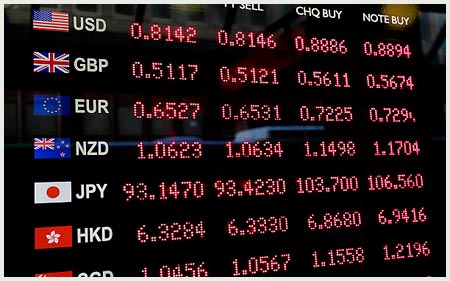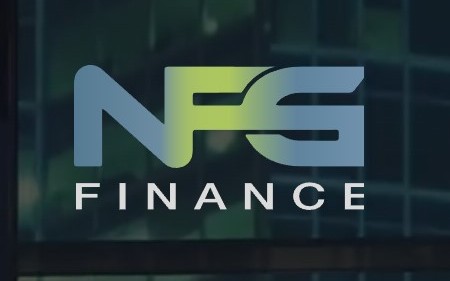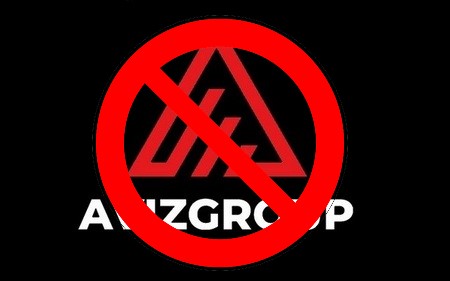What is the exchange rate and how to calculate it?
 Paul Roberts
23 / May / 22
Visitors: 780
Paul Roberts
23 / May / 22
Visitors: 780
Brandon Boda, Trade and Operations Analyst
Whether you are an employee of an exporting or importing company, or work abroad, the exchange rate greatly affects the capital you raise or distribute. So how do you calculate the exchange rate? Xavier de Villutreis, Associate General Manager of b-sharpe, answers this question in a video to help you optimize your cash management.
The foreign exchange market is an over-the-counter (OTC) market. Specifically, this means that the price is neither fixed nor official. On the contrary, the exchange rate is constantly changing at the whim of market participants.
Thus, the exchange rate of the Swiss franc to the euro, applied by banks or other entities (exchange offices and online exchange services), is set by them freely. The offered price depends, in particular, on the applied margin, which in turn depends on many parameters.
For example, it is logical to assume that this margin will be higher in an international banking institution (mainly due to structural costs) than in a fully digital online exchange service such as b-sharpe.
Easy and secure currency exchange
Foreign exchange market: how do financial intermediaries get money
In the foreign exchange market, the speaker's remuneration is the sum of the difference between the price he offers you and the price at which he himself will hedge.
Let's take the example of a customer who wants to sell 30,000 Swiss francs to get a euro back:
- You deposit CHF 30,000 with a financial intermediary
- this suggests an exchange rate of 1.12 (in other words, 1 euro is worth 1.12 Swiss francs);
- so you get a refund of €26,785.71;
- Intermediary sells CHF 30,000 at CHF 1.11 (€1 is now only CHF 1.11);
- since more euros are needed to buy the same CHF 30,000, the intermediary ends up returning 27,027.02 euros;
- With a simple subtraction, the intermediary's margin is 26,785.71 – 27,027.02 = 241.31 euros.
We therefore understand that the more favorable the exchange rate offered by a financial intermediary to its clients, the lower the margin charged will be. your interlocutor (bank, exchange office, online exchanger) are quite close to market ones! For this, it is highly recommended to use a currency converter such as b-sharpe...
Spread and interbank rate: definitions
The second thing to know is that the exchange rate is divided into two parts:
- sales ratio;
- purchase factor.
The difference between them is called the spread. When you are told, for example, that the EUR/USD pair is at 1.1430, it is actually the average between the interbank buy rate and the interbank sell rate.
Small clarification: the interbank rate is the rate at which large banks trade with each other. For them, the spread is meager (maximum 2 points for major currency pairs). On the contrary, the longer the chain of financial intermediaries, the higher the spread for the final buyer. The spread is also more expensive when small amounts are traded.
How the exchange rate is calculated
The method of calculating the price paid to you is always the same: the interlocutor takes a margin (expressed as a %) of the interbank rate in question. As a general rule, a Swiss bank takes (for amounts under CHF 50,000) a margin of 1.50%.
If the EUR/CHF interbank rate is 1.11, the Swiss bank will sell you the euro at a price of 1.11 x 1.015 = 1.1266. As for Swiss francs, they will be sold at a price of 1.11/1.015 = 1.0935.
Good to know. Since its structure is different from that of a bank, an online exchange service can offer much lower margins. b-sharpe, for example, offers a margin of just 0.50% of the interbank rate.
So, a traditional bank will allow you to get 8,876 euros for 10,000 Swiss francs. With b-sharp you will receive 8,964 euros for the same exchange amount; those. 88 euros arrived.
Now you can understand how the exchange rate is calculated. To put these skills into practice and optimize your currency risk management, here are 5 mistakes to avoid the next time you want to exchange your Swiss francs for euros! >
We have compiled a complete Bad Reputation Brokers.

Paul Roberts
Paul Roberts 51 years old Born in Edinburgh. Married. Studied at University of Oxford, Department of Public Policy and Social Work. Graduated in 1997. Works at Standard Life Aberdeen plc.






